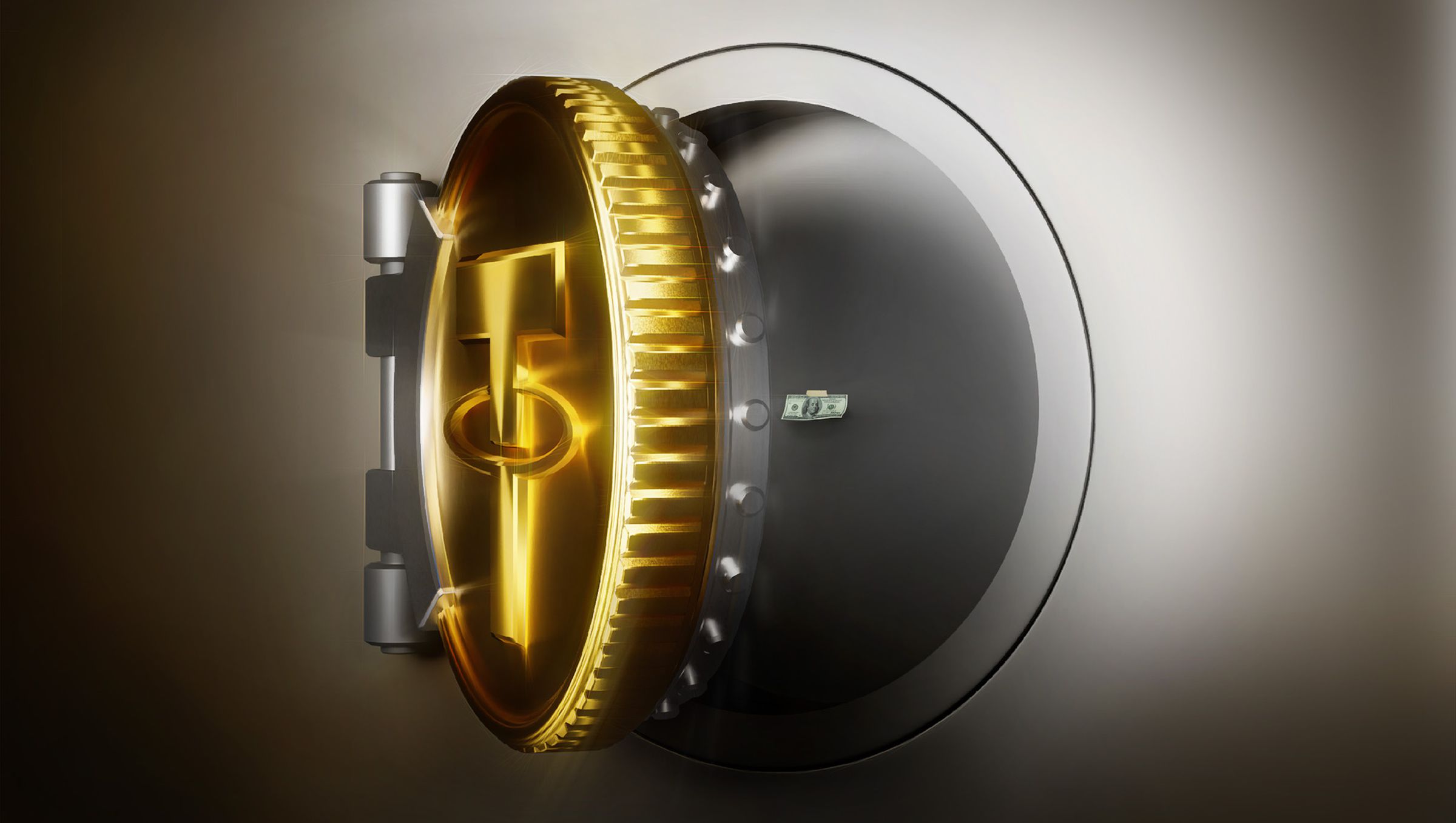Cryptocurrency
Is stablecoin a security? Crypto Investors get rid of stablecoins: USDT suffered the most

The market capitalization of the leading stablecoins has dropped significantly after the FTX crash. Let’s find out what this means for the market and whether it’s worth following the example of other investors and going into fiat. Is stablecoin a security?
The drama surrounding FTX seriously undermined investors’ confidence in centralized exchanges and forced them to get rid of stablecoins en masse. USDT suffered the most: according to CoinMarketCap, its supply has fallen from $67 billion to $65 billion in the last two weeks.
Because of concerns about Tether and stablecoin security reserves, users are redeeming USDT or converting it to USDC. A similar situation was observed after the collapse of Terra Luna – then within two weeks the market capitalization of the asset fell by $10 billion.
However, CTO Paolo Ardoino says that Tether was not affected by the FTX crash and users have nothing to worry about.
BUSD and DAI were also hit
USDT is not the only stable coin affected by the FTX story. For example, the circulating supply of BUSD fell from $23 billion to $22.5 billion, and DAI fell from $5.7 billion to $5.2 billion.
On the contrary, the capitalization of USDC and Pax Dollar steel blockers increased. Over the past two weeks, USDC’s supply reached $44.7 billion.
The cryptocommunity is actively discussing this on Twitter and speculating about the reasons for this growth. Some believe it may be due to USDC’s profitability and the influx of former USDT holders into the asset.
FTX collapse undermined investor confidence
The fall of the Sam Bankman-Fried empire has undermined user confidence in the cryptocurrency and led to a massive collapse in prices.
But market participants also fear that other platforms will follow FTX’s lead. So it’s no surprise that many retail investors are choosing to hold their own assets rather than hold them on centralized exchanges.
Previously, we reported that Poloniex curtailed support for stablecoins on the BNB Chain.
Cryptocurrency
Popular Trader Dumps 5 Altcoins to Focus on Meme Coins With 100X Potential

TL;DR
- One well-known crypto trader sold TIA, ONDO, and other holdings to chase major gains in the meme coin niche – a move that sparked both support and skepticism across the crypto community.
- Despite Bitcoin’s dominance above 64%, some analysts believe an altseason is near, with low-cap tokens such as HNT and ONDO expected to lead the charge.
Cashing Out
While talk of an upcoming altseason continues to buzz across the crypto space, popular X user Crypto Beast has decided to offload some of their bags. The trader revealed the sell-off occurred on July 7 and included the tokens Celestia (TIA), Ondo (ONDO), Ethena (ENA), Quant (QNT), and Pyth Network (PYTH).
It is worth mentioning that all of the aforementioned have posted some gains on a 24-hour scale. TIA leads the charge with a spike of around 10%, while the rest have recorded more modest increases.
The crypto enthusiast claimed the sold altcoins have utility but questioned whether this is needed in the space. “They’re good for one thing: making VCs richer,” they added.
Crypto Beast has now shifted focus to hunting meme coins with 100x potential. Some X users commenting on the post supported the decision, stressing the importance of profit-taking. Others, though, wondered why the trader would prioritize meme coins, considering the hype for these tokens had significantly reduced in the past several months.
Recall that the sector was booming towards the end of last year, with its total market cap surging past $120 billion. Currently, the capitalization stands at less than $60 billion (per CoinGecko’s data).
Was This the Right Time?
Bitcoin (BTC) continues to outperform its rivals, and as of this writing, its market dominance is beyond 64%. However, multiple industry participants believe the altcoins have yet to catch up with the biggest cryptocurrency and steal the show.
X user Chiefy predicted that the next altcoin “super-cycle” will start in July. “This time, low caps will pump 175x and ignite the most powerful altseason,” they forecasted. The analyst thinks Sui Network (SUI), Helium (HNT), Render (RENDER), Filecoin (FIL), and Ondo (ONDO) are among the top contenders for explosive rallies.
It’s worth noting, though, that SUI should not be placed in the same ‘low-cap’ category, as it’s the 15th-largest cryptocurrency with a market cap of over $10 billion.
Carl Moon – an X user with over 1.5 million followers – chipped in, too. He claimed that the altcoins “will go parabolic” once the combined market capitalization of all digital assets (excluding BTC and ETH) soars above $1.15 trillion. Currently, the figure stands well below $1 trillion.
Binance Free $600 (CryptoPotato Exclusive): Use this link to register a new account and receive $600 exclusive welcome offer on Binance (full details).
LIMITED OFFER for CryptoPotato readers at Bybit: Use this link to register and open a $500 FREE position on any coin!
Cryptocurrency
GUNZ Announces $GUN Token Expansion to Solana

[PRESS RELEASE – Robinson Point, Singapore, July 7th, 2025]
GUNZ, the L1 blockchain ecosystem that powers the groundbreaking AAA game Off The Grid (OTG), today announced the expansion of its $GUN token to the Solana blockchain. This strategic move brings part of the $GUN token’s circulating supply to Solana, enhancing accessibility for U.S. (and global) users while reinforcing GUNZ’s leadership in the blockchain gaming sector. On the 10th of July $GUN lands on Solana, bringing lightning-fast access and next-gen infrastructure to a whole new wave of gamers and community members.
Strategic Alignment with Solana: A Multi-Chain Vision
Under the bold banner, “$GUN is Coming to Solana,” GUNZ is embracing Solana’s high-speed, low-cost blockchain infrastructure and robust ecosystem to amplify its multi-chain strategy, aptly summarized as “Too Big for One Chain.” This move represents the latest step in a clear multichain strategy, setting the stage for additional expansions to other prominent blockchains in the future. The bridging process to Solana will be facilitated by LayerZero, a leader in blockchain interoperability and seamless cross-chain transactions.
Currently, $GUN is available on multiple blockchains and platforms, including GUNZ Layer 1 and AVAX C-chain.
This alignment radically increases accessibility to the token and unlocks new opportunities for partnerships, campaigns, and community engagement by leveraging Solana’s global reach.
To celebrate this milestone, GUNZ will launch a limited-edition Solana-themed NFT content pack. Details on how to claim this exclusive offering will be announced soon, adding excitement for the growing Off The Grid community.
Off The Grid and the GUNZ Ecosystem: A Clarified Vision
GUNZ is renowned for Off The Grid, the first AAA game with an onchain economy, available across platforms like Epic Games Store, Xbox, PlayStation, and soon Steam. Within OTG, the $GUN token serves as a utility token, enabling players to purchase in-game items, engage in asset trading, and participate in blockchain-powered gameplay interactions. Following the Solana integration, players will be able to deposit Solana-based $GUN directly into their in-game wallet, enabling fast, reliable, and convenient transactions within OTG’s immersive digital economy.
With over 17 million wallets registered in the GUNZ ecosystem, GUNZ is poised for strong growth. This milestone will boost ecosystem activity and token utility.
Leadership Perspective
“Launching $GUN on Solana reflects our long-term commitment to building a truly global, player-first ecosystem,” said Vlad Korolov, CEO at Gunzilla Games. “Solana’s speed and scalability allow us to reach new communities with greater efficiency and reliability. This is more than a technical upgrade—it’s a major step toward making blockchain gaming seamless, inclusive, and ready for the mainstream.”
Looking Ahead
GUNZ is set to share additional updates in the coming weeks, including details on the highly anticipated Steam release of Off The Grid and further global token availability. As the ecosystem gears up for mass adoption, the crypto community is encouraged to stay tuned for announcements that will solidify GUNZ’s position as a trailblazer in blockchain gaming.
Risk & Regulatory Disclosure
$GUN is an in-game utility asset. It has not been registered, qualified, or approved as a security, capital-markets product, or digital payment token in any jurisdiction. No regulator has reviewed this material. This release is not an offer, solicitation, or investment advice, and $GUN is not offered to U.S. persons. The token’s value may fall to zero and is not covered by investor-compensation schemes (including those under EU MiCAR). Always verify eligibility before acquiring or using $GUN.
About Gunzilla
Founded in 2020, Gunzilla Games is an independent AAA video game developer and publisher behind Off The Grid — a groundbreaking battle royale now live on PC, PlayStation, and Xbox. Gunzilla is also the creator of GUNZ, a gamer-first blockchain ecosystem, and the proud owner of Game Informer, the largest gaming media outlet.
Driven by a passion for innovation, Gunzilla is dedicated to pushing the boundaries of what’s possible in gaming—delivering cutting-edge experiences that empower players, developers, and the industry as a whole.
For more information, users can visit GunzillaGames.com.
Official X of Gunzilla Games – https://x.com/GunzillaGames
Official X of GUNbyGUNZ – https://x.com/GUNbyGUNZ
Official X of Off The Grid – https://x.com/PlayOffTheGrid
Binance Free $600 (CryptoPotato Exclusive): Use this link to register a new account and receive $600 exclusive welcome offer on Binance (full details).
LIMITED OFFER for CryptoPotato readers at Bybit: Use this link to register and open a $500 FREE position on any coin!
Cryptocurrency
Ethereum Eyes 16.7M Gas Cap Under Vitalik Buterin’s New Proposal

Ethereum co-founder Vitalik Buterin and Ethereum Foundation researcher Toni Wahrstätter have proposed a ceiling on how much gas a single transaction can use, and aim to tighten security while preserving efficiency as the protocol matures.
The draft proposal, EIP-7983, sets a 16.77 million gas limit per transaction. Interestingly, this is a significant change from the current architecture, where a single transaction can consume an entire block’s gas allowance.
Developers argue this open-ended design exposes Ethereum to denial-of-service (DoS) risks, inconsistent network load, and slower block verification, especially as the chain supports increasingly complex DeFi and zero-knowledge applications.
EIP-7983
By introducing a hard cap, Buterin and Wahrstätter seek to enforce more predictable resource usage without significantly disrupting typical user activity, noting that most transactions currently fall well below the proposed threshold.
Transactions of more than the 16.77 million gas cap would be rejected during validation. Such a move would ensure oversized transactions cannot enter blocks, while the block gas limit itself would remain adjustable by validators under existing consensus rules.
The authors frame the move as part of a broader effort to simplify Ethereum’s base layer and improve network reliability, which essentially echoes Buterin’s recent calls to streamline protocol design inspired by Bitcoin’s minimalist ethos.
Easing zkVM Constraints
Developers working on zkVMs and parallel execution engines have highlighted difficulties in handling transactions with unpredictable gas sizes. They believe a fixed ceiling could ease engineering constraints and allow better subdivision of workloads across threads.
The cap is also expected to reduce the risk of any single transaction monopolizing block resources, thereby improving consistency in execution times and block propagation. While the proposed limit may require some large deployments to split transactions into smaller segments, it aligns with Ethereum’s longer-term goal of supporting modular and provable systems while maintaining user experience.
EIP-7983 builds on the now-stagnant EIP-7825 but with a lower ceiling. The proposal is currently in draft status and is now open for community discussion as developers assess its practical impact on the network.
Binance Free $600 (CryptoPotato Exclusive): Use this link to register a new account and receive $600 exclusive welcome offer on Binance (full details).
LIMITED OFFER for CryptoPotato readers at Bybit: Use this link to register and open a $500 FREE position on any coin!

 Forex3 years ago
Forex3 years agoForex Today: the dollar is gaining strength amid gloomy sentiment at the start of the Fed’s week

 Forex3 years ago
Forex3 years agoUnbiased review of Pocket Option broker

 Forex3 years ago
Forex3 years agoDollar to pound sterling exchange rate today: Pound plummeted to its lowest since 1985

 Forex3 years ago
Forex3 years agoHow is the Australian dollar doing today?

 Cryptocurrency3 years ago
Cryptocurrency3 years agoWhat happened in the crypto market – current events today

 World3 years ago
World3 years agoWhy are modern video games an art form?

 Commodities3 years ago
Commodities3 years agoCopper continues to fall in price on expectations of lower demand in China

 Economy3 years ago
Economy3 years agoCrude oil tankers double in price due to EU anti-Russian sanctions



























